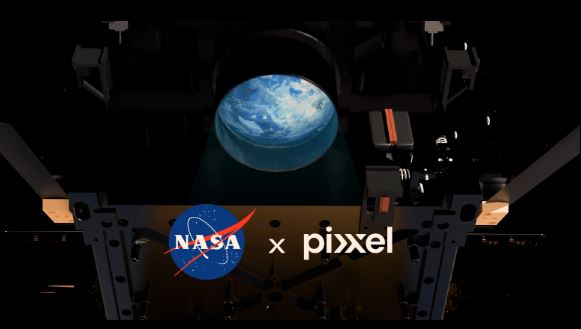New Delhi: NASA has selected Indian private spacecraft company Pixxel for a new contract to provide Earth-observation data and services.
Pixxel, which specialises in hyperspectral imaging and Earth observation, is one of the eight companies selected for NASA’s $476 million “Commercial SmallSat Data Acquisition Programme On-Ramp1 Multiple Award” contract.
Under this contract, these companies will provide the National Aeronautics and Space Administration (NASA) with Earth-observation data from commercial sources to support the US agency’s research-and-application activities that help improve life on the planet.
“The goal of the awards is to give NASA a cost-effective way to augment or complement the Earth observations acquired by the agency and other US government and international agencies for the benefit of all,” NASA said in a statement.
Pixxel’s technology captures data across hundreds of narrow wavelengths and provides granular insights on issues like climate change, agriculture, biodiversity and resource management, the company said in a statement.
Awais Ahmed, co-founder and CEO of Pixxel, said, “Being selected for this NASA contract is a monumental achievement for Pixxel and further validates that hyperspectral imaging will be integral to the future of space-based Earth observation and enable us to truly build a health monitor for the planet.”
“We are deeply honoured to support NASA’s Earth-observation initiatives and demonstrate the transformative potential of Pixxel’s hyperspectral technology in addressing critical environmental challenges,” he said.
Hyperspectral imaging captures images across different wavelengths of light, far beyond what the human eye (which detects only three colours — red, green and blue) can see. By capturing hundreds of narrow bands of light, it helps identify and analyse materials, chemicals or objects in great detail.
Pixxel also announced plans to launch its Fireflies satellites, which will offer the highest-resolution hyperspectral imaging ever with a five-metre resolution.
These satellites will capture data from more than 250 spectral bands, offering a more comprehensive coverage with a 40-km swath width and a 24-hour revisit frequency anywhere on the planet.
Pixxel’s chief commercial officer Aakash Parekh said, “This contract represents a major step forward in leveraging commercial hyperspectral data to bolster Earth-science research and environmental monitoring. We are proud to foster further collaboration on hyperspectral data applications within the scientific community and we look forward to working with NASA to further its mission with this cutting-edge earth-monitoring modality.”
Pixxel plans to expand its constellation to 24 satellites, making hyperspectral data more widely available to industries and governments.
This will provide real-time actionable insights to inform decision making, improve natural resource management and enhance environmental resilience, the company said.
PTI







































